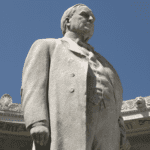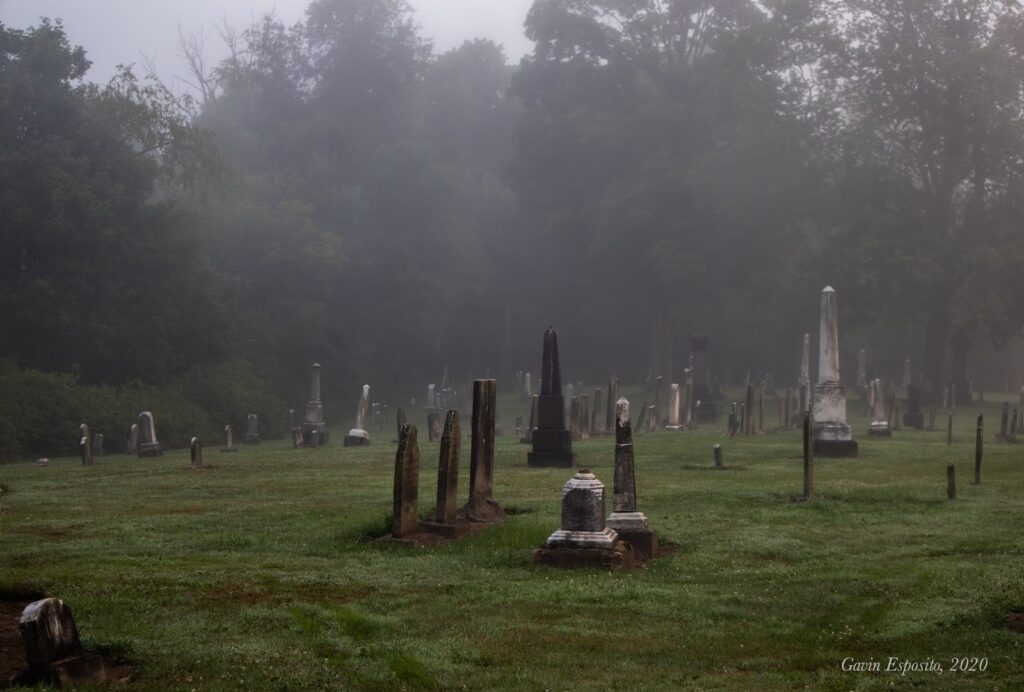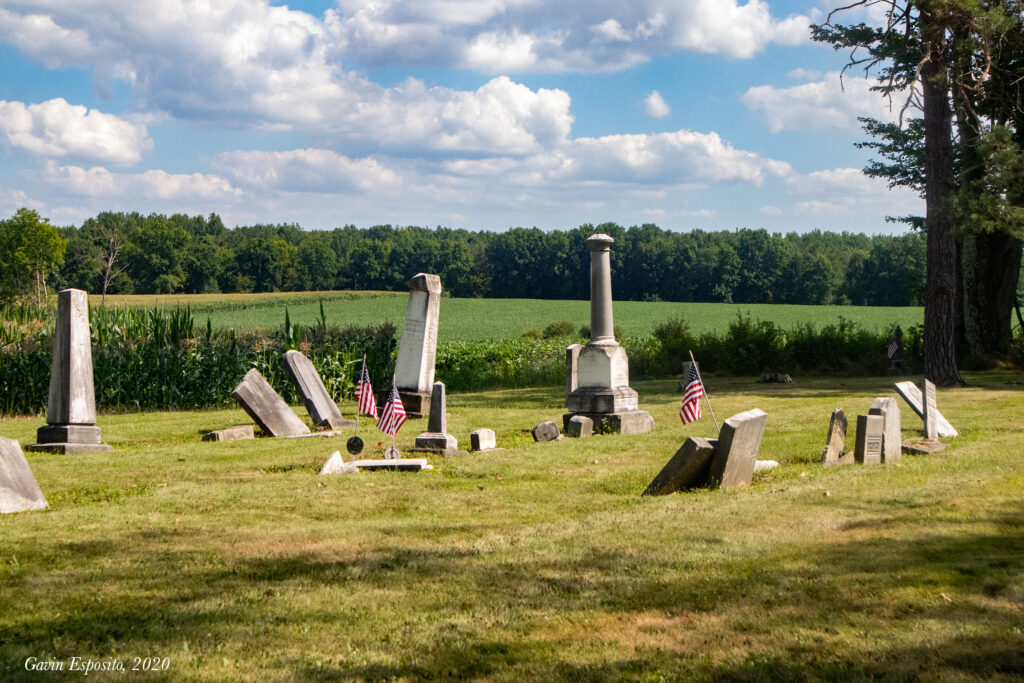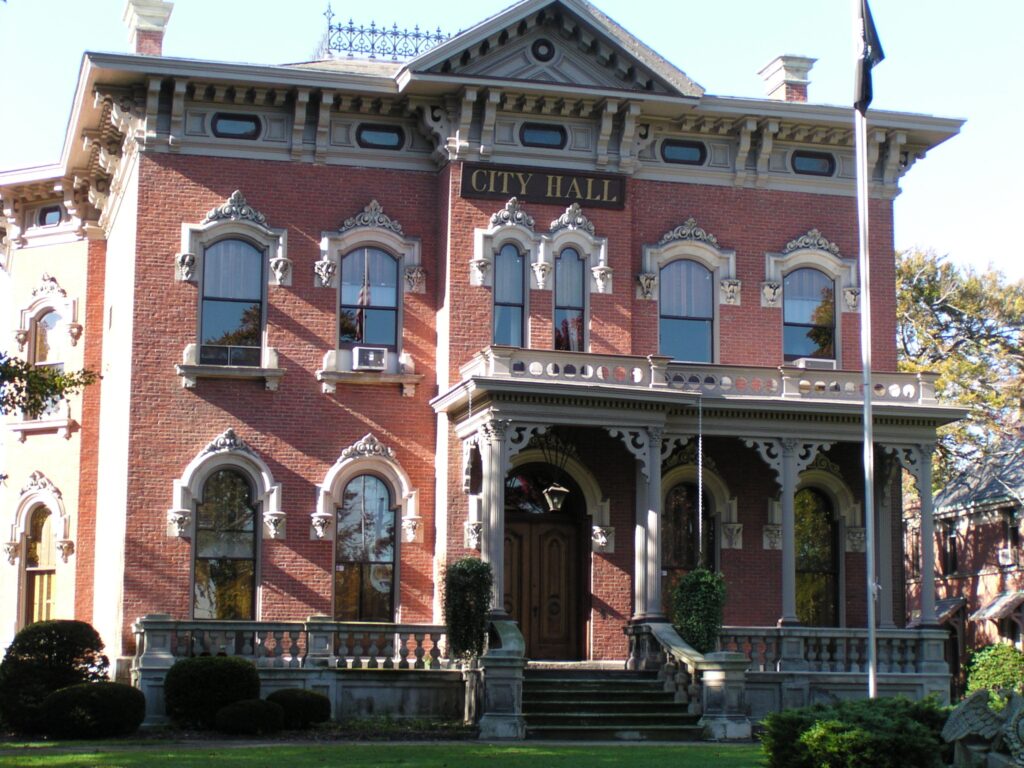Ohio is chock-full of history – and Trumbull County in Northeast Ohio is no different.
Since the 1950s, many of the state’s historic places, people, and moments have been memorialized through the Ohio Historical Markers program. The program has placed around 1,750 brown, Ohio-Shaped signs around the state, each with information on unique Ohio history.
Trumbull County boasts 36 historical markers, which highlight churches, historic homes, famous Ohioans, cemeteries, and Ohio’s first civil war monument.
To visit them all (and I challenge you to do so) – good news, we have a rundown of what you’ll find and where to find it:
1. First Presbyterian Church, downtown Warren – This stately church is a landmark for locals. The current First Presbyterian Church was dedicated in 1878, but the congregation was founded in 1803 by Rev. Joseph Badger. You’ll find the church at 256 Mahoning Avenue.
2. Kinsman House, downtown Warren – Built in 1832 as a wedding present for Olive Perkins Kinsman, this Greek Revival Style home later served as classrooms for the Dana School of Music, Hiram College Branch. It’s currently home to the Warren Heritage Center. The house and museum at 303 Mahoning Avenue is open from 2 to 5 p.m. the first Sunday of every month, of by appointment.
3. Perkins House, downtown Warren – This historic house was built in the early 1870s as a the home of Henry Bishop Perkins, Sr., a civic and business leader of the era. Several U.S. presidents, including James A. Garfield, Rutherford B. Hayes, and William McKinley, have visited the house. Today, the historic house at 391 Mahoning Avenue serves as Warren’s City Hall.
4. Trumbull Red Cross Chapter House, Pioneer Cemetery, downtown Warren – This marker commemorates the American Red Cross Centennial in 1981 and remembers an administration building and chapter house, built in 1931 and 1962 respectively. It also marks Warren’s oldest cemetery, Pioneer Cemetery, which has graves that date back to 1804. You’ll find the cemetery at 661 Mahoning Avenue.
5. Phebe Temperance Sutliff, downtown Warren – This historical marker located at the Warren-Trumbull County Public Library’s main branch on Mahoning Avenue remembers one of Trumbull County’s favorite daughters. A teacher and civic-minded woman, Phebe Sutliff served as President of Rockford College from 1896 to1901. During World War I, she taught citizenship classes for immigrants. And in 1924, she was the first woman to run for Congress in her district. She later served as the first woman president of the Board of Trustees for the Warren Public Library.
6. John Stark Edwards House, downtown Warren – built in 1807, this is the oldest remaining home in Warren. Today, the Trumbull County Historical Society stewards the house and the museum within. You can schedule a tour of the house at 303 Monroe Street by contacting the historical society.
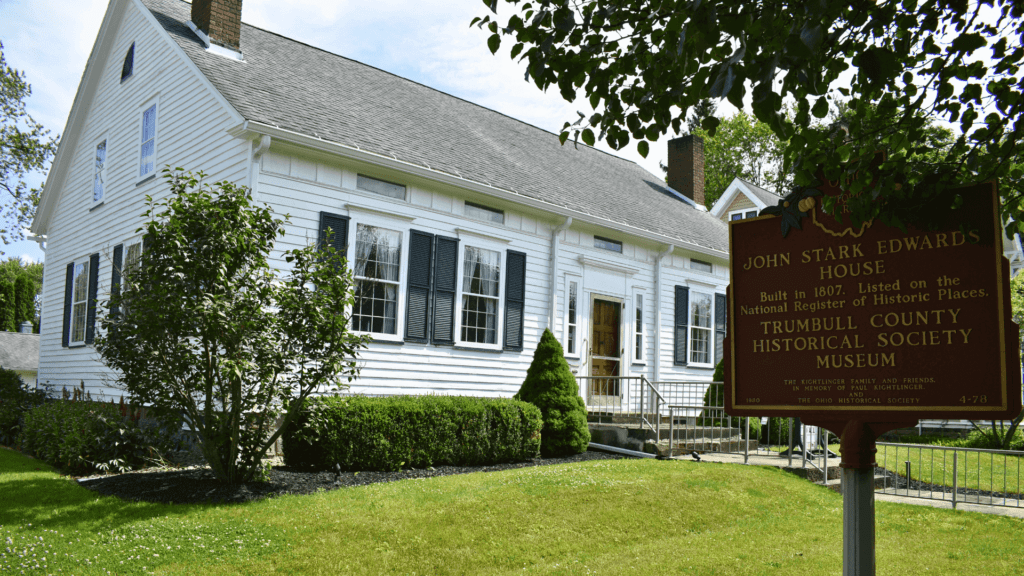
7. Harriet Taylor Upton House, downtown Warren – This historical marker remembers the life of Harriet Taylor Upton, a champion of women’s suffrage. Upton was the treasurer of the National American Woman Suffrage Association from 1885 to 1910 and brought its headquarters to Warren in 1903. Today, The Upton Association maintains the house at 380 Mahoning Avenue and offers tours by appointment.
8. The Old Erie Lodge No. 3. Free and Accepted Masons, downtown Warren – Though the lodge no longer stands, an Ohio Historical Marker tells the story of the Old Erie Lodge, which received its charter in 1803. Five years later, it joined five other Ohio lodges to create the Grand Lodge of Ohio. This marker is located at the corner of Mahoning Avenue and West Market Street.
9. Mahoning Lodge No. 29, IOOF, downtown Warren – The Independent Order of Odd Fellow, a world-wide fraternal organization, first came to Warren in 1844. The lodge was originally located at the corner of Park Avenue and Market Street, but has since been moved to 371 High Street, where you’ll find this Ohio Historical Marker.
10. Pennsylvania & Ohio Canal, downtown Warren – While the canal is no longer there, an Ohio Historical Marker at the corner of North Park Avenue and West Market Street acknowledges the cross-cut canal in Warren. The 82-mile P&O canal linked the Beaver Canal and the Ohio and Erie Canal until it was replaced by the railroad in the 1870s. The section between Beaver, Pa., and Warren was finished in 1839.
PRO TIP: It’s easy to visit numbers 1 to 10 all in one go. You can even walk them, if you’re up for about a mile and half round trip. And, when all that history and strolling works up an appetite, there are plenty of great restaurants nearby including CharBenay’s Wine of the River, West & Main, Beautiful Whirl’d, Nova Coffee Co., An’s House Vietnamese Café Restaurant, Saratoga Restaurant, Bushwick, and The Mocha House. Plus, if you’re into history – and I imagine you might be, if you clicked on this list – I recommend you stop by the nearby National Packard Museum to see some amazing historic cars. Then, you can head to…
11. Camp Hutchins-Warren’s Civil War Training Camp, Warren – This Ohio Historical Marker at 860 Elm Road, Warren, recalls the formation of the 6th Ohio Volunteer Calvary. Over 800 men trained in Warren from October to December 1861at the Oak Grove Fairgrounds in Warren. It was named Camp Hutchins after Congressman John Hutchins.
12. Ronald A. Parise, Astronaut and Scientist, Warren – Parise, from Warren, was a payload specialist for the Astro 1, Columbia, and Astro 2, Endeavour space shuttle missions in 1990 and 1995. He logged more than 600 hours in space. His marker is located at the Neil Armstrong First Flight Memorial at 2553 Parkman Road NW, Warren.
If you’re interested in aviation history, you’ll also enjoy:
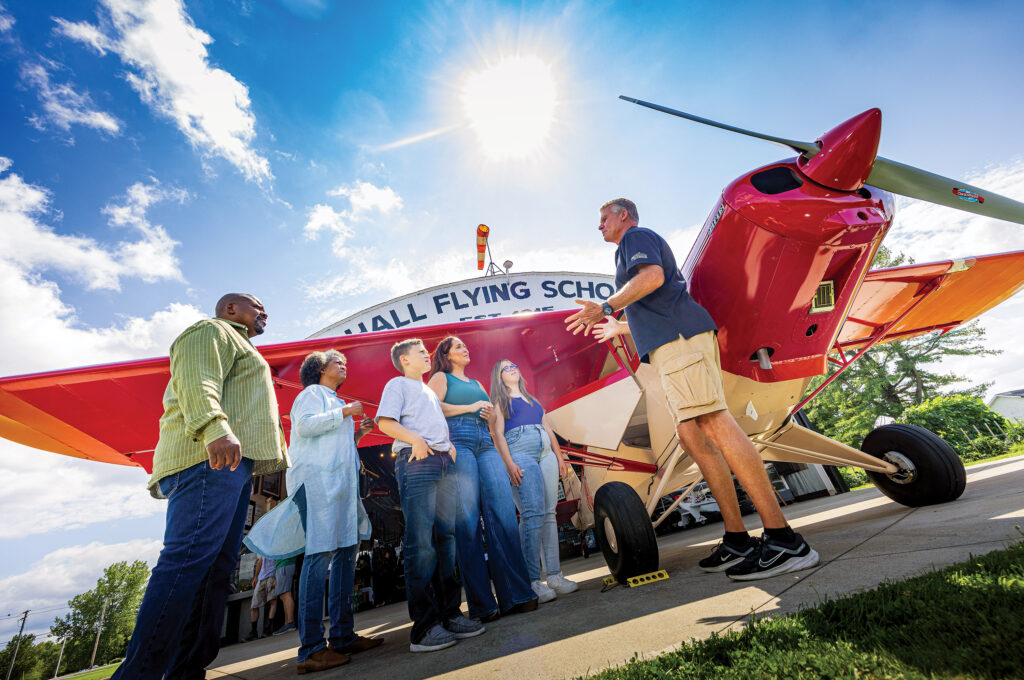
13. Ernie Hall, Aviation Pioneer, Howland – Ernest “Ernie” Hall was a pioneer of early flight who is recognized for his long career in aviation. He was a friend of the famous Wright brothers and built his own airplane in 1909. Today, you can visit the Ernie Hall Aviation Museum at 4033 North River Road. It’s open Saturday and Sunday from noon to 3 p.m. and for special events.
14. Highway of Light Airway Beacon & Tower, Southington – After World War I, airplanes were used for mail delivery, but flight at night was dangerous. The Army Air Service built an experimental lighted beacon route for night flying between Columbus and Dayton in 1923. The system proved successful – and more beacons were built, including one at Warren Skeets Airport, 3599 Herr Fieldhouse Road, Southington.
While you are in Southington, you can visit another historical marker before learning more about aviation history in Vienna.
15. Southington Township Centralized School and Monument Park, Southington Township – Southington native Newton Chalker built Chalker High School in 1907 with the condition that residents vote to consolidate the township’s one-room district schoolhouses into a central campus. A statewide trend existed at the time. You’ll find this Neo-Classical Revival-style school and its historical marker at 4432 State Route 305 in Southington.
16. Mary Ann Campana, Vienna – Italian immigrant Mary Ann Campana was a pioneer in aviation. At age 18, she became the first licensed woman pilot in Ohio. About a year later, she set the world endurance record in a Light plane for a non-refueled flight. With 40 gallons of gasoline, she spent almost 12 and a half hours in the air! Her Ohio Historical Marker is at the Youngstown-Warren Regional Airport, near the north part of the main building at 1453 Youngstown-Kingsville Road.
17. Vienna Township Green and Cemetery, Vienna – Vienna Township Green and Cemetery were created in 1810 when two residents deeded eight acres to the Vienna Presbyterian Church. Several historic structures still stand on the green, including Vienna Presbyterian Church and Vienna Methodist Church. The Green’s historic marker is located at the gazebo just west of 4295 Warren-Sharon Road.
PRO TIP: You can grab a bite to eat at Yankee Kitchen or Vienna Brother’s Pizza, and stop into Once Upon a Bookstore to browse used books. And, if you’re looking for ice cream, there’s a Diary Queen just up the road. Then, you can head to Brookfield Township to find…
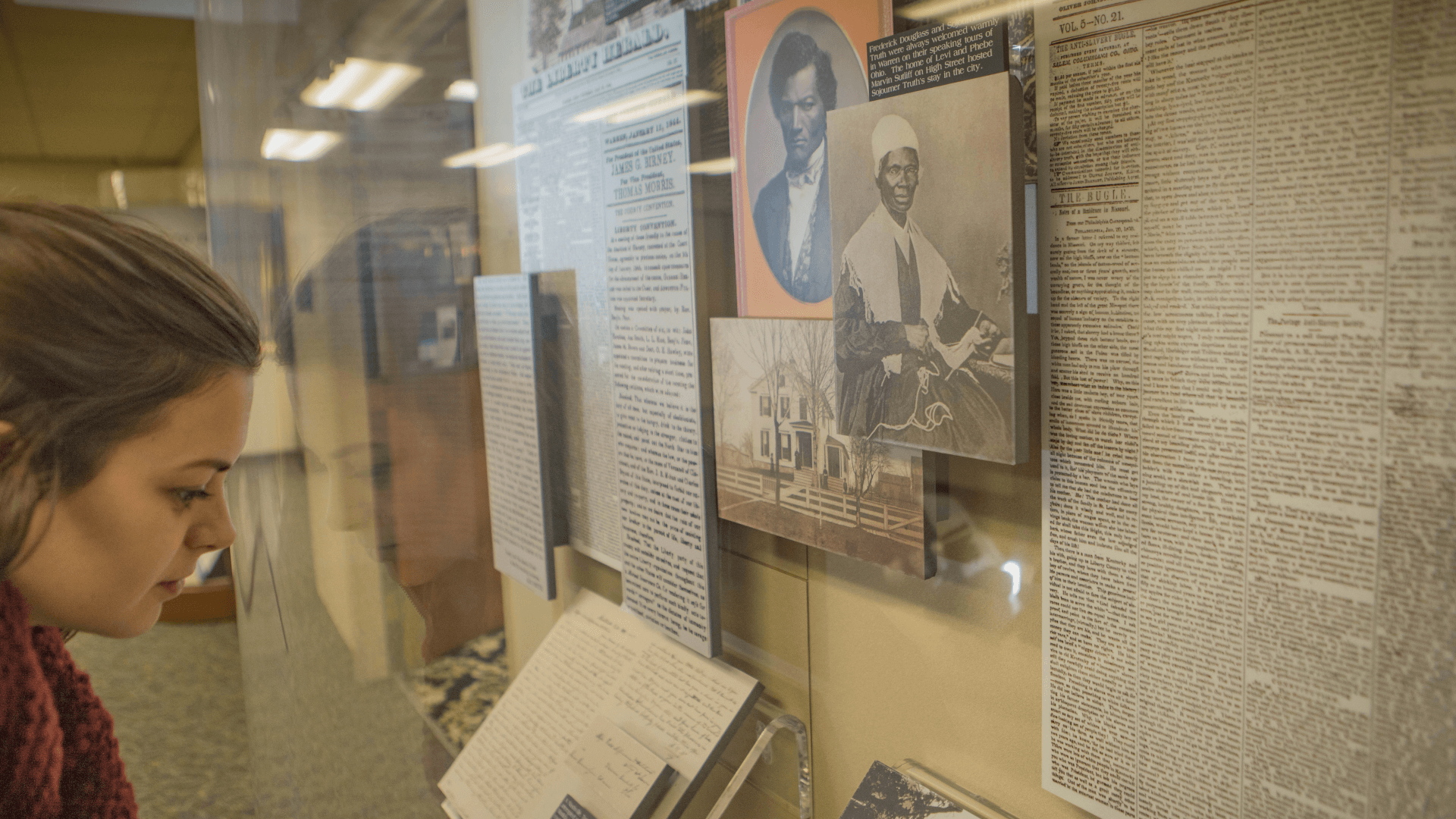
18. Brookfield Township – The Ohio Historical Marker at the south end of Brookfield Township Park on Grove Street tells the story of the founding and flourishing of Brookfield Township. Judge Samuel Hinckley of Massachusetts founded the township in 1798 and named it after a city in England. To learn more, you’ll have to read the marker!
19. The Underground Railroad, Brookfield Township – Two escaped women were Trumbull County’s first known travelers of the Underground Railroad to pass through Brookfield in 1843. Trumbull County reportedly had over 150 miles of Underground Railroad routes. Freedom seekers who came through Brookfield mostly came up from the Youngstown area. You’ll find this marker at the northwest corner of Brookfield Township Park.
Brookfield is about as far as you can go in Trumbull County without hitting Pennsylvania. And while you’ll find plenty of great history, there, too, we’re on a mission. You’ll have to turn around and head into Howland Township and Niles to find these next markers…
20. Howland Springs, Howland – In 1803, Dr. John Seely bought 85 acres of land that included a mineral springs. Using the springs, he created a health spa, which quickly became the township’s center for culture and recreation. Future presidents James A. Garfield and William McKinley reportedly visited the springs. You’ll find the marker for Howland Springs, fittingly, at 8707 Howland Springs Road SE.
21. James Heaton, founder of Niles, downtown Niles – James Heaton first built his log cabin on Vienna Avenue in 1806. He later built a grist mill, dam, and mill race along Mosquito Creek. He named his settlement “Nilestown.” His Ohio Historical Marker is located near Farmers National Bank on South Main Street in Niles.
22. Ward-Thomas House, downtown Niles – Niles industrialist James Ward Sr. built the house that bears his family’s name in 1862. Ward built and ran the James Ward & Company iron rolling mill in the 1840s. He also founded the Niles Firebrick company in 1872. The Ward-Thomas House is now a museum run by the Niles Historical Society. You can visit the house, as well as the gardens, gazebo, and greenhouse on the property at 503 Brown Street.
23. William McKinley Birthplace, downtown Niles – William McKinley was one of seven Ohioans to serve as President, and he was born in Trumbull County! Before becoming President, McKinley was Governor of Ohio. He was first elected President in 1896 and won reelection in 1900. Six months into his second term, he was shot by an assassin, leading to his death. You can visit a reconstruction of McKinley’s home on the original site at 40 South Main Street. The house is open 1 to 4:30 p.m. Wednesday to Friday, or by appointment. And, it’s just a few blocks away from the National McKinley Birthplace Memorial and Museum and the McKinley Memorial Library.
Note: In downtown Niles, you can grab a coffee and a crepe at Cadence Coffeehouse or pop over to Stoneyard Grill & Tavern for a heartier meal. Downtown Niles is also a perfect place to catch the Niles Greenway trail, so bring your bike, roller blades or walking shoes. Then, you can pop over to nearby Mineral Ridge and Girard…
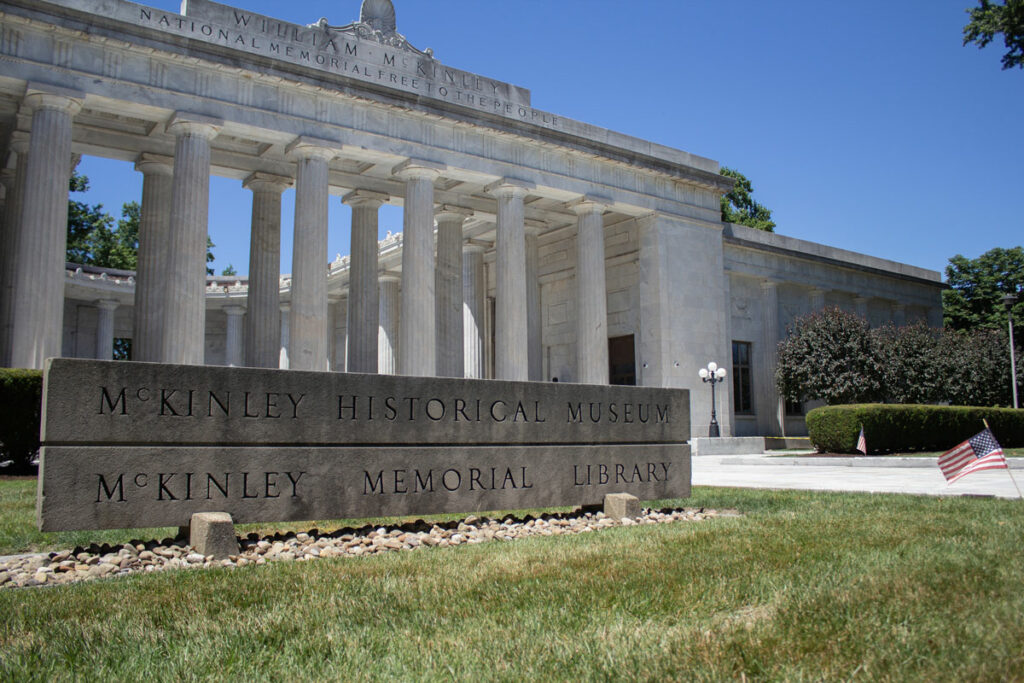
24. The Salt Springs, Mineral Ridge – This Ohio Historical Marker in Kerr Cemetery notes that a salt spring about a mile west of the site was the main attraction for immigrants coming to the area in the mid-1700s. Before that, Native Americans extracted salt from the springs to preserve meat. In 1903, railroad tracks covered the salt springs, though they are remembered in the name of the road where you’ll find this marker: 1240 Salt Springs Road.
25. Mineral Ridge Black Band Ore, Mineral Ridge – In the mid-19th century, iron-rich ore was discovered in the Mineral Ridge Coal Mines. This laid the foundation for the a revival of Trumbull County’s iron industry. You’ll find this marker at the southwest corner of Stewart Street and South Main Street in Mineral Ridge.
26. The Barnishel House, Girard – Now home to the Girard Historical Society, the Barnishel House was built around 1840 by Henry Barnishel Jr. It’s one of the oldest remaining structures in Girard. You can tour the house between 1 and 4 p.m. on the second and fourth Sundays of the month between May and November, or by appointment.
PRO TIP: You’ve earned a pizza break. Good news, you have lots of options in Girard: Cocca’s Pizza, Pizza Joe’s, and Marco’s Pizza are all local favorites. Or, you can grab some delicious Italian or a burger at Margherita’s Grille. Oh, did I mention Margherita’s also has pizza and pizza burgers? Next, to Leavittsburg and Newton Falls…
27. Pennsylvania & Ohio Canal, Leavittsburg—This marker memorializes another section of the east-west “cross-cut” Pennsylvania and Ohio Canal. Specifications for the canal called for it to be at least 28 feet wide at the bottom, 40 feet wide at the waterline, and at least four feet deep. This marker is at the Leavittsburg Heritage Association at 4901 West Market Street.
28. Newton Falls Covered Bridge, Newton Falls – Trumbull County’s only covered bridge was built in 1831. A pedestrian walkway was added in 1921 for children crossing the bridge on their way to school. You’ll find the bridge – and its marker – on River Street.
29. Newton Township Duck Creek Settlement, Newton Falls – This Ohio Historical Marker notes that Alexander Sutherland and his wife, Sarah, became Newton Township’s first settlers even before Ohio was a state. You’ll find this marker, loaded with more Newton Township history, in the triangular intersection of Newton Tomlinson Road, Hallock-Young Road, and Hallock-Sook Road. Use the first two roads to find the marker with GPS.
Alright, now it’s time to head to northern Trumbull County to round out this historical marker scavenger hunt…
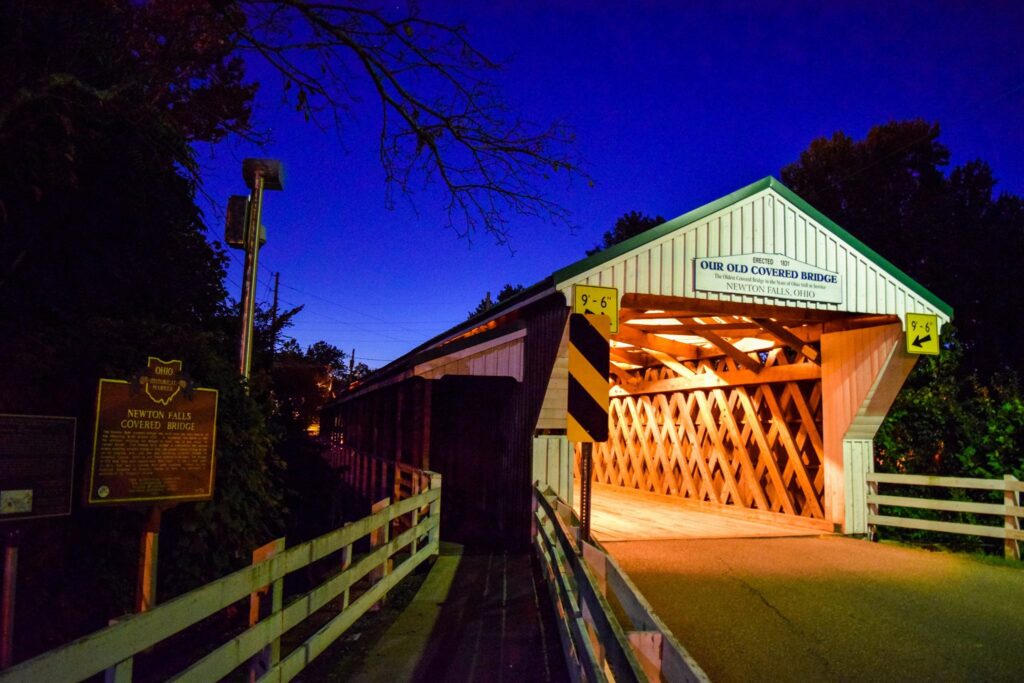
30. Fowler Historic District, Fowler Township – Samuel Fowler originally named the township Westfield after the Massachusetts town where he lived. Fowler’s brother, Abner, was the first to arrive in the township and was also the first recorded death in 1806. You’ll find the marker that chronicles the township’s early history and historic buildings at the northwest corner of State Route 193 and Circle Drive.
31. Casterline Cemetery, Cortland – Originally part of the Casterline farm, the cemetery was also once the site of a Presbyterian church. Several early settlers of Cortland are buried in the historic cemetery, including soldiers who fought in battles from the Revolutionary War through the Civil War. The cemetery and its marker are located South of 418 South High Street, Cortland.
32. Darrow Octagon House, Kinsman – Now a private residence, this unusual house was once home to Clarence Darrow, a nationally acclaimed lawyer in the famous State of Tennessee v. John Thomas Scopes trial, also known as the “Scopes Monkey Trial.” Built around 1854, the house really has eight sides! It’s located at 8405 Main Street, Kinsman.
33. Gustavus Center Historic District – This Ohio Historical Marker commemorates historic Gustavus Center and its many unique buildings, some of which were reportedly used on the Underground Railroad. They include the 1840s Farmers’ Exchange Store, the Storekeeper’s House, and several churches. Find the marker on the southwest corner of State Route 87 and State Route 193.
34. Old Stone House, Mesopotamia Township – This house was built around 1825 using stone from a nearby quarry with purple mineral bands. Today, it’s a bed and breakfast! Find it at 8505 State Route 534, Mesopotamia.
35. Ohio’s First Civil War Monument, Bristolville – Bristol’s Civil War monument was installed in 1863, while the Civil War was still happening! It memorializes the sacrifices of 14 “defenders of the union from Bristol, Ohio.” The monument and its historic marker can be found at the west end of Bristol Township Park, across from 6255 State Route 45.
36. Bristol Public Library, Bristol – The library opened its doors in 1913. A postcard campaign encouraged the donation of books – and many local families obliged, also donating heirlooms and relics that became a local history collection. The library at 1855 Greenville Road still lends out books today!
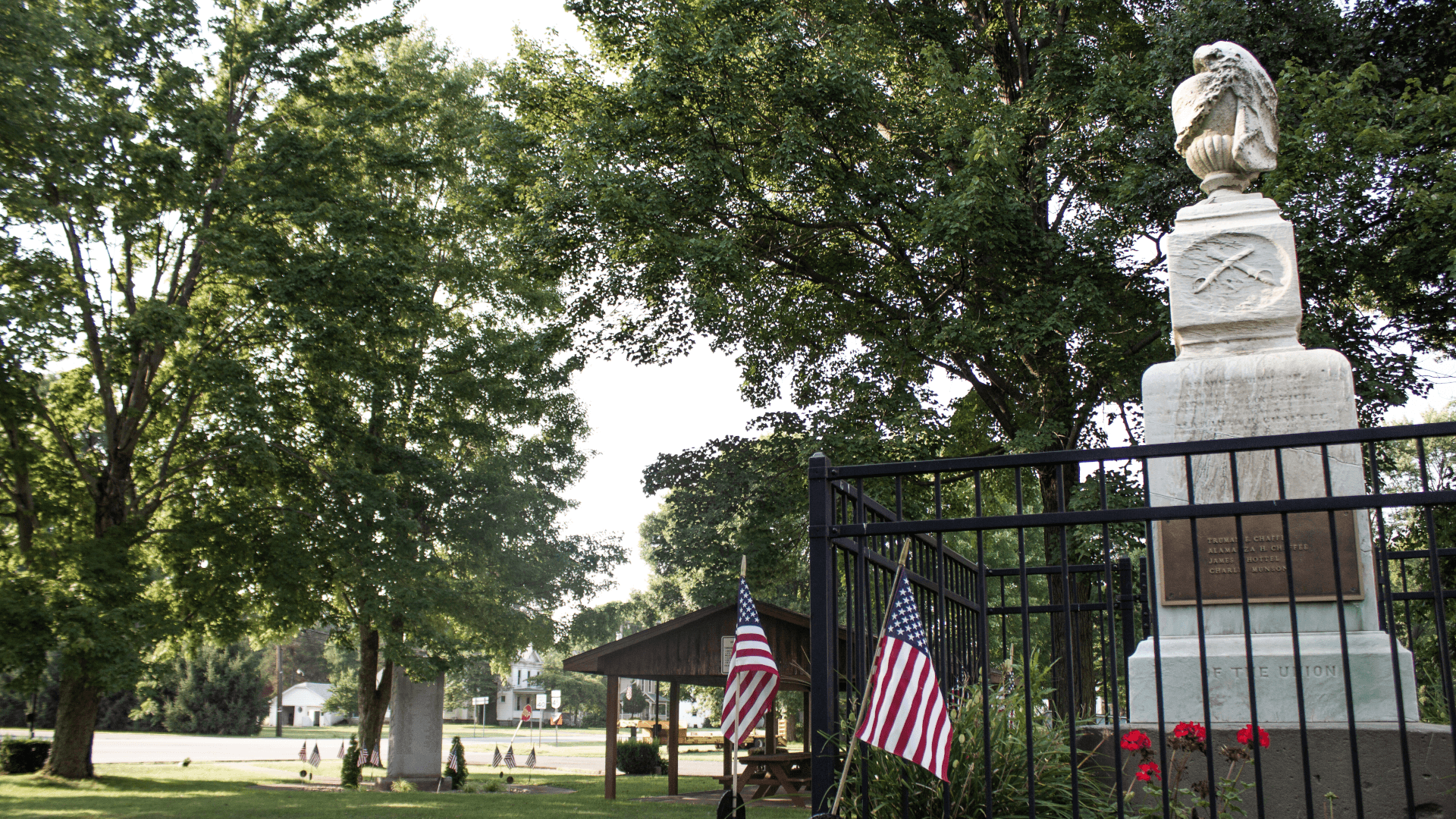
Those are all of Trumbull County’s historical markers – for now. Ohio History Connection, which runs the program, adds about 20 makers statewide each year. Since there’s plenty of history to highlight in Trumbull County, don’t be surprised if this list gets a little longer pretty soon.
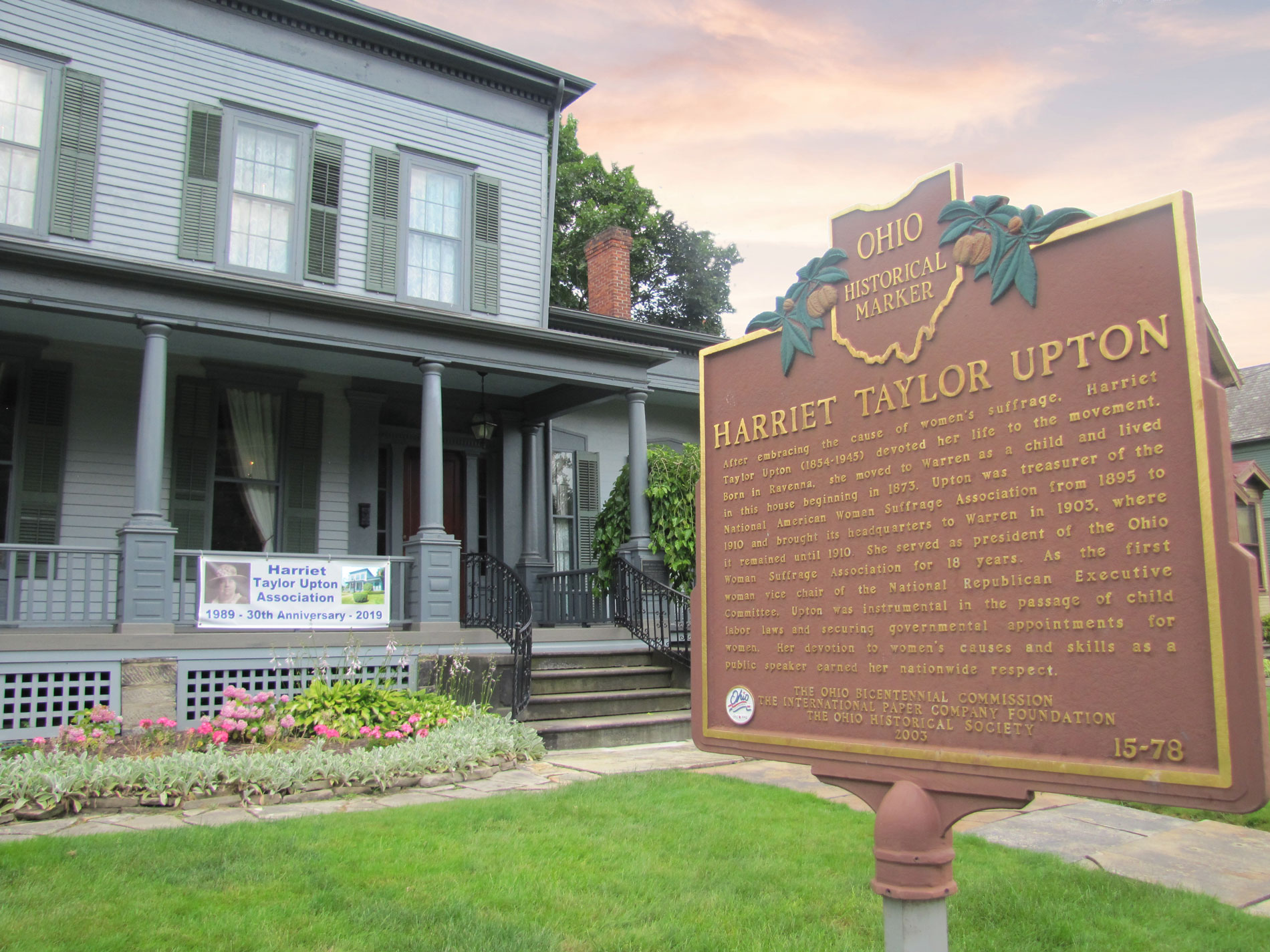 ">
">





